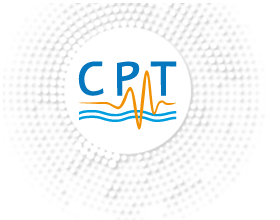Agenda
Mardi 12 décembre 2017
Geometric gyrokinetic reduction for strongly magnetised plasmas
Natalia Tronko (Max-Planck-Institut, Allemagne)
Résumé
Strongly magnetized plasmas, such as astrophysical and laboratory ones, represent complex
multi-scaled systems in space and time. Building up reduced models allows one to access physical
mechanisms in different regimes (e.g., turbulent, collisional) and geometry configurations.
Since more than three decades now, reduced kinetic models like gyrokinetics, resulting from
the elimination of the fast scales of motion associated with the particle rotation around magnetic
field lines, is the focus of intense research, both theoretical and numerical. Such an approach
allows a drastical reduction of computational time for numerical simulations. The gyrokinetic
reduction provides access to accurate prediction of long-scale processes such as transport which is
one of the main issues for fusion plasma confinement [1]. For astrophysical plasmas, the gyrokinetic
theory is also of interest [2]. Recently, gyrokinetic simulations have been used to access small scale
spectra, in order to fill the gaps in prediction of solar wind behavior when magnetohydrodynamics
approximations fail.
Building up solid theoretical basis following consistent derivation of the reduced equations is
an ultimate starting point for development of trustworthy numerical simulations. A systematic
derivation, which guarantees the energetic consistency of gyrokinetic models requires advanced
mathematical tools such as differential geometry (perturbative Lie-transformation techniques) as
well as advanced variational calculus on functional spaces.
The gyrokinetic dynamical reduction starts on the charged particle 6-dimensional phase space
with a series of gauge-transformations and Lie-transformations aiming to remove fast angle dependencies
from the single particle Lagrangian. At the second stage, fields and reduced particles
dynamics are coupled inside the specific variational principle.
The field-particles Lagrangian is the central object of the derivation, it contains information
about all the approximations and orderings, which will be naturally transferred to the equations
of motion and associated conserved quantitites. Furthermore, the Noether theorem can be applied
to the gyrokinetic Vlasov-Maxwell system issued from the variational formulation for derivation of
the associated conserved quantities. In particular, the energy invariant represents a special interest
for verification of quality of numerical simulations.
In this talk a systematic approach developed within the European enabling research project VeriGyro
for derivation of models implemented in major European gyrokinetic codes will be presented
[3]. An example of implementation of energy conservation law into the Particle-In-Cell gyrokinetic
code ORB5 will be considered for verification of quality of simulations [4].
1
References
[1] X. Garbet, Y. Idomura, L. Villard, and T. H. Watanabe. Gyrokinetic simulations of turbulent
transport. Nuclear Fusion, 50:043002, 2010.
[2] A. A. Schekochihin, S. C. Cowley, W. Dorland, G. W. Hammett, G. G. Howes, E. Quataert,
and T. Tatsuno. Astrophysical gyrokinetics :
weakly collisional plasmas. Astrophysical Journal Supplement, 182:310, 2009.
[3] N. Tronko, T. Bottino, A. Goerler, E. Sonnendr¨ucker, D. Told, and L. Villard. Verification
of gyrokinetic codes : theoretical background and applications. Physics of Plasmas, 24:056115,
2017.
[4] N. Tronko, A. Bottino, and E. Sonnendr¨ucker. Second order gyrokinetic theory for Particle-InCell
codes. Physics of Plasmas, 23:082505, 2016.
